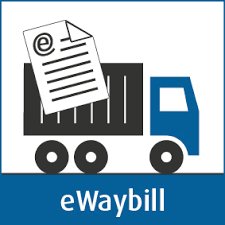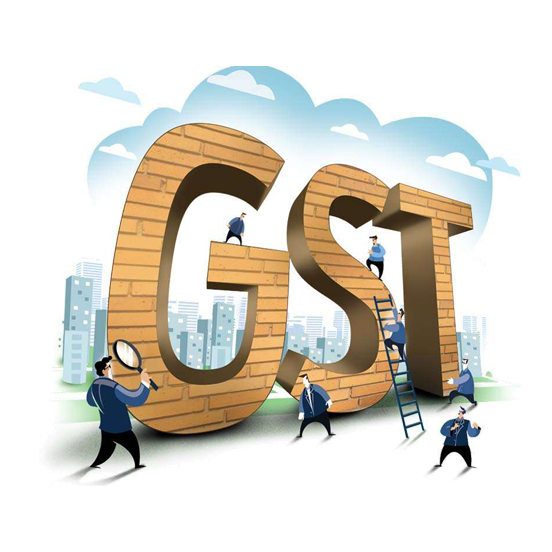- Business Startup
- Startup-Indian Entities
- Startup-Foreign Entities
- Business/Entity Conversion
- Business Registration
- Tax & ROC
- Yearly Tax Compliances
- Income Tax Return Filing
- ITR for Salaried Individuals/ Pensioner
- ITR for Capital Gain
- ITR for Companies
- ITR for House Property Income
- ITR for Income from Business
- ITR for Individuals having Share Trading
- ITR for NRIs and Resident with Foreign Income
- ITR for Partnership Firm/AOP/BOI
- ITR for Presumptive Income
- ITR for Speculation Business
- ITR for Trust, NGO and Companies
- Advisory on Tax Savings
- TDS Return Filings
- LTCG Filing and Advisory
- Income tax Notice Compliance
- Basic
- Standard
- Premium
- ITR for House Property Income and Other Source Income
- ITR for Capital Gain
- ITR for NRIs and Resident with Foreign Income
- ITR for Individuals having Share Trading or Casual Income
- ITR for Speculation Business
- ITR for Income from Business and Profession
- ITR for Presumptive Income
- ITR for Partnership Firm/AOP/BOI
- ITR for Companies
- ITR for Trust, NGO
- Advisory on Tax Savings
Yearly Tax Compliances
ITR for Salaried Individuals/ Pensioner
Income Tax Return Filing
- GST
- GST Registration (₹799)
- GST Accounting
- GST Return Filing
- GST Annual Return
- GST LUT Submission
- GST Taxpayer Registration
- GST Registration for Foreign Entity
- GST Registration Cancellation
- GST-Revocation of Cancellation
- GST Return Filing Packages
- E-way Bill Submission
- Ask an Expert-GST
GST Registration & Cancellation
- IPR
- Trademark
- Trademark Registration (₹5799)*
- Trademark (Individual) Registration
- Trademark with Logo Designers (Individual)
- Trademark with Logo Designers (Company)
- Trademark Objection Management
- Trademark Renewal
- Trademark Renewal (Company)
- MSME Compliance Trademark Registration
- Trademark Restoration
- Trademark Assignment
- Trademark Hearing
- Trademark Opposition
- Trademark Infringement
- Trademark Investigation
- Trademark Logo
- Copyright
- Copyright Registration
- Copyright Objection
- Computer Software Copyright
- Logo Copyright for Goods
- Songs Copyright
- Sound Recording Copyright
- Logo Copyright for Service
- Artistic Work/Painting Copyright
- Cinematography Copyright
- Copyright a Book
- Literature/Dramatic Copyright
- Music Notation Copyright
- Phrase/Slogan Copyright
- Symbol Copyright
- Patent
- Design
Trademark
- Trademark
- Compliance
- LLP Annual Compliance
- Winding up of Inactive LLP
- LLP Winding up by NCLT
Initial Compliance
General LLP Compliance
Changes in company
LLP Annual Compliance/ Closure
- Pay Roll
- Company
- Blog
Goods and Service Tax
GST Return Filing
GST Return Filing
- Overview
- Points to remember
- Process
What is a GST Return?
Goods and Service Tax law now governs the major portion of the indirect tax system in India. The suppliers registered under this regime need to fulfill the compliance requirement regularly. Based on the turnover and the activities, the requirements and period of filing returns are prescribed under law.
With online GST return filing, the taxpayers intimate the Goods and Service Tax Network (GSTN) about the inflow and outflow of supplies including the amount of tax paid and collected. While recording the taxable transactions with Government, the taxpayer is also required to pay the amount of tax collected from an outward supplier of goods or services after the deduction of Input Tax Credit (ITC).
As per the GST law, every individual/Company/LLP registered under the GST Act has to furnish the details of sales, purchases, and the tax paid by filing for GST returns with the administrative authorities.
As a business person/ firm, one of your first priorities will be to file a GST return. Hence, knowing the ropes can help you make the process smoother and simpler. While filing a GST return, you are supposed to provide all the particulars related to your business activities, like the tax liability declarations, tax payments, and also any other related information as per instructions provided by the government.
The GST return filing process has to be done electronically in the GST portal. A facility has to be offered for the manual process of GST return filing tasks. This facility helps the business taxpayer in India to prepare the return offline and then upload it on GSTN through the facilitation center. There are also various components of GST returns that you need to know about.
The GST return mainly includes purchases, output GST on the sales, input tax credits as per GST paid while making the purchases, and also includes the total sales. In order to file the GST return, the purchase invoices and GST compliant sales are needed.
Penalties
What are the penalties, late fees, and interest rates?
If there are any offenses committed then a penalty has to be paid under GST
Late filing
Late filing of the GST returns can attract a penalty called a late fee. And according to the Goods and Service Tax can attract a penalty which is Rs. 50 under CGST and Rs.50 under SGST that accounts for Rs.100 a day for having Revenue and Rs. 10 under CGST and Rs.10 under SGST that accounts for Rs.20 a day for having Nil Revenue in subsequent Month.
With the late fee, an interest of 18% has to be paid per annum. It is calculated on the tax to be paid.
Non-compliance
In case if the taxpayer is not filing the GST returns then the subsequent returns cannot be filed. Hence, to avoid heavy fines and penalties it is better to file the GST returns on time as it will lead to a cascading effect.
All Package is hereabove to file the GST Return. If the Number of invoices are more than and E-Commerce Business which is not covered in the package our experts will guide you on additional charges if any.
Frequently Asked Questions
Who should file GST returns?
Under GST, every person or entity registered under GST would be required to file a GST return for the prescribed period. Even those entities having a GST registration but no activity would be required to file a GST Nil Return to stay compliant with GST regulations.
Do we need different forms for IGST, SGST and CGST?
The same return form can be used for filing SGST, CGST and IGST. It will have different columns for each one of them and it will have to be filled on the basis of inter-state or intra-state supplies.
- Central Excise
- Service Tax
- State Sales Tax or VAT (except exclusive liquor dealers if registered under VAT)
- Entry Tax
- Luxury Tax
- Entertainment Tax (except levied by the local bodies)
What is the meaning of details of outward supplies?
Under GST, the expression “details of outward supplies” means information pertaining to sales transactions in a month like invoices issued, debit notes, credit notes, and revised invoices.
What information is required to file GST return online?
Prescribed information from the invoices including the HSN code in respect to the supply of goods and the accounting code in respect to the supply of the services generated needs to be uploaded in the return. The information shall also cover the sales, purchase and any expenses occurred during the reporting period.
Can we revise the returns?
It is not possible to revise the GST returns. Changes can be made on the details provided in the next period’s return form amendment section
What steps are involved in filing of GST returns for each month (Between me & Taxcomate)?
Transaction-wise details are to be provided on the monthly basis by a client. This is to be done manually in the shared format by Taxcomate Or one can opt to take an extract from the accounting software (GST Ready Software) by Taxcomate, which will be reviewed by the experts and the return will be filed after a thorough review and confirmation.
How would the composition scheme work under GST?
Under GST, the composition scheme is applicable to all types of businesses with a turnover up to Rs.50 lakhs. These taxpayers will have to pay a fixed percentage of the business turnover.
Does GST apply to all businesses?
Yes. GST is applicable to all types of businesses. It applies to all the traders, manufacturers and providers. It can also extend to writers, bloggers and dealers.
Can I apply for GST Registration online?
Yes. Taxpayers can apply online for GST registration. You just need to get your business registered in the official GST Portal and upload the scanned copies of all the documents needed.
Online GST Return Filing Procedures – A detailed filing process
In total, there are 3 steps to be followed in the GST return filing work for every Indian Business Taxpayer.
STEP 1: DOCUMENTS AND MONTHLY RETURNS INVOLVED IN THE GST RETURN FILING PROCESS
All registered taxpayers can follow the filing format and upload their Month return invoice (i.e., Sales, Purchases, Etc.) on the GST portal. To do that, you will have to maintain electronically all the records of the invoice. We help you with filing process in the GST portal by setting up simplified versions of excel templates. It will aid you in maintaining the records with ease.
STEP 2: PREPARATION FOR GST RETURN FILING PROCEDURE
We collect all the information and documents needed to start preparing for your GST returns first.
Taxcomate will maintain the invoice records of registered taxpayers and by month end, you can easily file the GST returns using our exclusive team of experts.
Once you do the filing process in GST portal, from then on, our expert affiliate will remind you about the filing date so that you won’t forget the date and end up paying tax penalties.
STEP 3: STEPS REQUIRED TO COMPLETE THE RETURNS FILING PROCESS
The first step before filing your GST will be to review the GST filing before submission. We, at Taxcomate, give you an opportunity to do the same.
The second step is your approval.
After your approval, we will be filing your online returns
Our GST experts will file the GSTR returns using a challan. The ARN number generated will be shared with you.
Once the process is completed successfully, we will mail you an acknowledgement about the same to the registered email id provided by you.
Select the below plan to file the GST Return
- Nil Return Filing : 399
- With Invoice up to 100 : 799
- With Invoice 100 – 250 : 1499
- With Invoice 250 – 500 : 1999
GST Return Filing
₹600.00
To make tax compliance easier, the income tax department has categorized taxpayers into many groups based on income and its source. So, you need to file your returns accordingly. Registers with GST Return Filing plan and enjoy the benefits
Benefits of GST Registration ?
-
The GST will consolidate Central Excise Duty, Service Tax, VAT, Central Sales Tax, Customs Duty, Central Surcharge & Cess, Octroi, Luxury Tax, Entertainment Tax, Purchase Tax and a few other indirect taxes. The GST will apply on all goods and services. Even petrol and petroleum products will eventually be subject to it.This would make tax collection and compliance easy for businesses across the country.
-
The GST council has decided on a four-tier structure. The GST rate will depend on the type of goods and services. Currently, the slab rates are 5%, 12%, 18% and 28%
-
Currently various businesses like restaurants, computer sales and services businesses have to deal with both VAT and Service Tax regulations resulting compliance burden on the business, as they have to calculate taxes for the transaction based on different rates for different items. With the Implementation of GST Business will be made easy
-
Since in some states under the VAT regime, businesses are required to comply with VAT regulations once they cross an annual turnover of Rs.5 lakhs. Under GST regime, GST liability occurs only if an entity crosses an annual turnover of Rs.10 lakhs in northeast or hill states, whereas for rest of India, the threshold is set at Rs.20 lakhs.


























